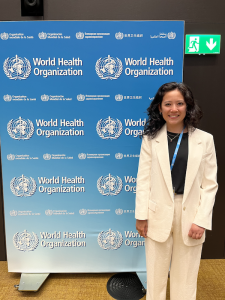
Steve Polatas has multiple sclerosis and just celebrated his sixtieth birthday. As with any milestone birthday, it is a time for reflection and a time to think about what is yet to come. As Steve looks to the future, he looks forward to retirement and traveling with his wife, relaxing, and spending time on the things he loves to do. Central to all of that is an ability to remain active.
“With a progressive disease like MS, you’re always worried about what’s over the horizon. Am I going to wake up one day and the leg that’s given me issues won’t work any more? I want to enjoy traveling and relaxing while I’m still mobile. Maintaining an active lifestyle is essential to that.”
For Steve, maintaining mobility is critical because it plays an essential role in all aspects of his life. As we discussed in a recent blog post, for individuals living with a chronic condition like multiple sclerosis, “mobility impairment is inextricably linked to physical [cit], mental [cit], and financial [cit] wellbeing.” Looking more closely at the last of those three factors, the indirect costs associated with an MS diagnosis are over $30K per year on average, a number that increases as mobility declines [cit]. That number is primarily associated with lost wages as a result of unemployment and/or early retirement brought on by disease progression.
Active Living with MS
Steve was originally diagnosed with MS in 2000, though in retrospect, symptoms began to show up in the early 1990s. In other words, Steve has been living with MS for almost half of his life. According to the Mayo Clinic, “onset usually occurs around 20 and 40 years of age” [cit]. For Steve and the millions of other people around the world living with MS, such a young diagnosis is extremely daunting. In one study, nearly half of respondents stated that “walking and mobility problems were…the most bothersome MS symptom” [cit].
Steve works hard at battling his disease and is a self-described “exercise junkie.” In his words: “I have always had an active adult life. I took up road cycling seriously in the mid 1980s and used to log thousands of miles on the bike each year. I stopped cycling 10 years ago due to balance and coordination challenges, but have replaced that activity with others, namely taking long walks on the treadmill every day and regular workouts on my rowing machine.
“All of these workouts keep my body moving, which is essential. I consider myself fortunate to remain as mobile as I am, which is a rarity for a man with MS.” (While men are statistically less likely to receive a diagnosis of MS than women, they are more likely to develop impaired mobility [cit].)
From Aerospace Engineer to Neuroscience Pioneer
Steve is a mechanical engineer by education and he has designed aerospace products for almost 15 years. His proficiency in technology then led him to a career in IT, where he has spent the last 20+ years. He loves news and research, and first learned about CIONIC about a year ago. When he read about the multisite foot drop trials CIONIC was conducting, he jumped at the opportunity to participate. “Given my product development experience and engineering background, I wanted to do anything I could to help the CIONIC team develop this new technology. I saw that it had the potential to make a huge impact for people with mobility differences.”
Experiencing increasing challenges to his mobility, Steve was especially motivated to try the Cionic Neural Sleeve at home: “All of my efforts at eating well and staying active have helped, but as time goes on the disease claws its way more and more into my life. Ten years ago or so I developed foot drop, which impacts how I walk and how much I am able to walk. At the beginning of the day, I’m generally not too bothered by my foot drop. The challenge is when I have to walk any distance. For my job, for example, I have to cover a lot of distance walking around facilities. By the end of the day fatigue sets in and moving around is much more difficult.
“During the early data collection trials at Cleveland State University in late 2021, when I put on the sleeve I could immediately see improvement to my foot drop. In April of 2022, I was excited to join the Home Usability Study to see how the Neural Sleeve impacts my mobility over time. I’ve been wearing the Neural Sleeve almost every day, and have seen great progress in the past few months.”
Feeling Stronger With & Without the Neural Sleeve
“With foot drop, I am constantly thinking about tripping, and the challenges with different surfaces (sticky, bumpy, etc.). People shouldn’t have to think about walking in the same way that they shouldn’t have to think about breathing, but that’s not the case with MS. The Neural Sleeve removes the stress and constant worry and concentration about what your toe is doing — the system takes care of that for you. To be able to walk and not have my foot drop get worse is tremendous. For example, my yard is about a third of an acre and I mow it with a push mower. Over the past couple of years that activity has gotten more difficult, but now I wear the sleeve when I mow the lawn and the process has gotten much easier.”
Steve also shared the transformation he has seen during his daily exercise regimen. “One of the ways I stay active is walking long distances on the treadmill. Before the Neural Sleeve, I could walk about 1.5 miles before my foot drop forced me to stop. Now, I walk 3 miles per day on average and have increased my speed while doing so.
“Importantly, my walking when I’m not wearing the Neural Sleeve has improved as well. The way I describe it is that the stimulation is waking up my nerves and muscles again. I can walk unaided at least twice as far now than I could before I had the Neural Sleeve, and I’m even able to run for short distances, something I haven’t been able to do in years.”
To join Steve and other early adopters in our Explorer Program, join us at cionic.com





